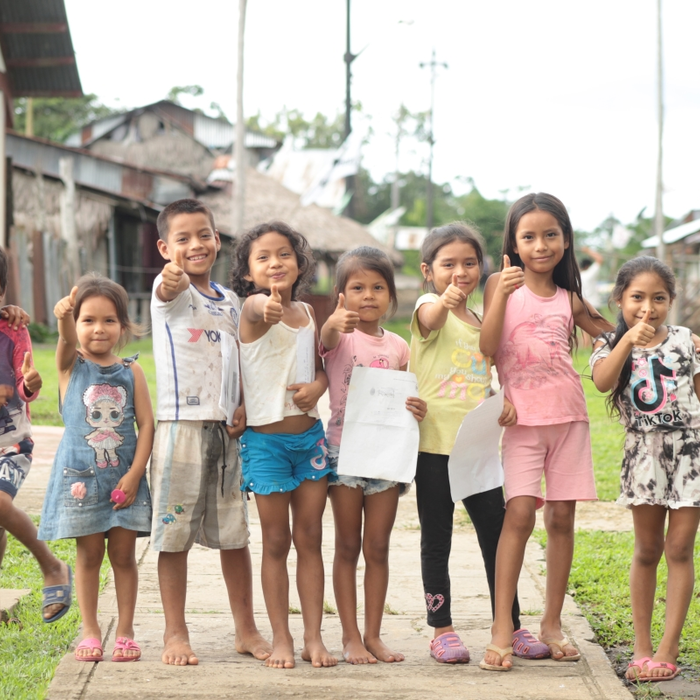Accelerated Education: Designing Flexible, Inclusive Programs
Meet Out-of-School Learners Where They Are
 Photo Credit: Robert Sauers, USAID
Photo Credit: Robert Sauers, USAID
Accelerated Education Programs (AEPs) target out-of-school children and youth between the ages of 10 and 18 with the goal of transitioning them into the formal education system, vocational training schools or paid employment. Out-of-school children and youth in AEPs have special needs that depend on the circumstances that led them to drop out or not join the formal education system in the first place.
The first three principles of the Accelerated Education: 10 Principles for Effective Practice developed by the Accelerated Education Working Group focus on creating a flexible, inclusive environment for every student to help achieve the program’s goals.
Building a Flexible Program
Creating a flexible program is key to ensuring all out-of-school children and youth have access to the AEP. Sometimes, class time may be shorter than in a formal school setting and the location may vary, depending on the students’ circumstances. Older children, for instance, may have other duties that prevent them from attending day classes. In this case, classes might be held in the evenings, on weekends or on alternate days.
In the Dadaab refugee camps in Northern Kenya, the Norwegian Refugee Council (NRC) runs an Accelerated Education Program that is approximately three hours less per day than formal schools to create flexibility for older students with responsibilities at home. The program also added classes to accommodate students from different age groups.
A male student enrolled in the program explains, “I have a big family, and my parents are very old. So, I have to do a lot to help since I am the oldest: to fetch water, to cook, to wash, and mostly to watch over my brothers and sisters. I do these things in the morning before going to school and as soon as I am home after. I do these things after it is dark, too.”
Flexibility, however, can sometimes be hampered by local structures that impose traditional education practices or limit your ability to be responsive to students’ needs. In South Sudan, Accelerated Education Programs have to stick to the regular school calendar. In Jordan, learners more than three years older than the average age of children in their grade can’t enroll in formal school. Negotiating with local authorities and the Ministry of Education is critical in scenarios like these.
Creating a flexible program also means choosing a location that is accessible and suitable for all students. Pick a place that is not far from where the students live and that is conducive to learning (this doesn’t necessarily need to be a traditional school).
Developing Your Curriculum, Materials and Pedagogy
An AEP’s curriculum, materials and pedagogy must be truly accelerated, suitable, and use the right language for the students. The teaching pedagogy should integrate various methodologies to suit the needs of every student.
- Use a curriculum with a strong focus on project-based learning, which entails learning by addressing real issues that students face and exploring potential solutions. Learning is framed as an adventure with appropriate challenges. The High Schools for Peace in Colombia took this approach. These schools, which support internally displaced persons alongside community youth, enable students to acquire a high school diploma and improve their skills toward promoting peaceful co-existence in their communities. Students use what they learn to address community concerns, such as security, recruitment of youth into paramilitary groups, and coca harvesting.
- Focus on the core competencies in basic literacy and numeracy skills. Non-core subjects, like art, sports and music, can be removed. In the Save the Children Accelerated Education Program in Pujehun District in Sierra Leone, students spend more than twice as much time on literacy and math than social studies and science per week.
- All learning materials should be age appropriate and meet learners where they are in terms of their physical, social, emotional and cognitive development. Relevant learning materials should also speak to students’ interests, abilities and prior life experiences, while also being inclusive, gender-sensitive and conflict sensitive.
An Environment That is Inclusive, Safe and Learning-Ready
A safe learning space is a necessary prerequisite for all learning but especially learning in AEPs. Safe learning spaces include separate latrines for boys and girls and access to clean water. An environment that is learning-ready also means ensuring there are enough teaching and learning supplies, classroom facilities and furniture. Both the physical environment and the instructional materials should be accessible for all students.
Most importantly, learner-centric AEPs must be committed to the humanitarian principle of "Do No Harm." This means not fueling conflict or exacerbating existing ones. For example, a program in Ethiopia targeting historically marginalized pastoralist populations was sensitive to the ongoing conflict between different ethnic communities. In an effort to "Do No Harm," they recruited teachers with the same cultural and linguistic background as the students and developed learning and teaching materials in different languages.
Finally, when designing your AEP, work closely with the students and the community to understand local definitions of flexibility, inclusion, and safety. This will better position the program to be able to teach as many students as possible.
Talk more about this topic with USAID’s Accelerated Education expert by emailing Nina Weisenhorn at nweisenhorn@usaid.gov.
Related Blog Posts

Unlocking a World of Learning

Exploring Three Resources in the PSS-SEL Toolbox
